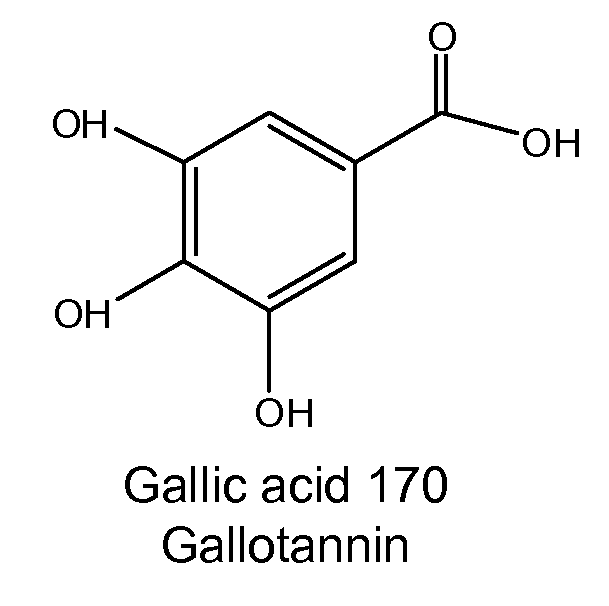Diterpene Glycosides as Natural Solubilizers
a technology ofditerpene glycosides and solubilizers, which is applied in the direction of amide active ingredients, ketone active ingredients, drug compositions, etc., can solve the problems of uniform toxicity and quality control of cds, lack of compatibility of drug molecules, and inability to meet the requirements of cyclodextrins, etc., to reduce the symptoms of haemophilia, inhibit some cancers, and improve the solubility of water
- Summary
- Abstract
- Description
- Claims
- Application Information
AI Technical Summary
Benefits of technology
Problems solved by technology
Method used
Image
Examples
example 1
Materials and Methods
[0065]Sources of Solubilizers
[0066]Rubusoside: Rubusoside was extracted from Chinese sweet leaf tea leaves (Rubus suavissimus; Rosaceae) purchased from Natural Plants Products Factory, Guilin S&T New Tech Company, Sanlidian Campus of Guangxi Normal University, Guilin, Guangxi, China. Rubusoside has a molecular formula C32H50O13 and molecular weight of 642.73. First, the air-dried leaves were boiled with water with a weight to volume ratio ranging from about 1:10 to about 1:20. From this extraction, a crude dried extract (20 to 30% dry weight yield from the raw leaves) was obtained that contained from about 5% to about 15% rubusoside by weight. The dried extract was then reconstituted with water to a weight to volume ratio ranging from about 1:4 to about 1:5. In this concentrated extract, the ellagitannins would partially precipitate out and were removed by filtration. The rubusoside was retained in the solution. The solution containing rubusoside was then subjec...
example 2
Effect of Rubusoside on the Water Solubility of Rutin
[0075]Rutin, a light-yellow colored compound, is a potent anti-oxidant that inhibits some cancers and reduces symptoms of haemophilia. It is known to have poor solubility in water (Table 1; 125 μg / ml; The Merck Index, 1996). In the presence of 100 mg rubusoside, 14-fold more rutin went into the aqueous solution, thus increasing the solubility of rutin to approximately 1.75 mg / ml (Table 2).
TABLE 2Rutin solubility in the presence of rubusoside (RUB)SolubilityAbsorptionincreaseComplex(411 nm)factorRutin0.2811Rutin-RUB3.08614
example 3
Effect of Rubusoside on the Water Solubility of Tanshinone II
[0076]Tanshinone IIA is one of the natural analogues of tanshinone. Tanshinone IIA (as well as other tanshinones such as tanshinone I, dihydrotanshinone, and cryptotanshinone) is soluble in methanol but insoluble in water. In the presence of a 100 mg / ml concentration of rubusoside (10% w / v), tanshinone IIA went into solution. The concentration was measured using HPLC at a wavelength of 281 nm with the elution of tanshinone IIA at about 27.50 min. The concentration of tanshinone IIA in 100 mg / ml rubusoside was about 53.28 μg / ml (FIG. 9, middle chromatogram). In the presence of a 200 mg / ml concentration of rubusoside (20% w / v), tanshinone HA concentration in solution was about 127.72 μg / ml. (FIG. 9, upper chromatogram) Without the presence of rubusoside but using absolute methanol as a solvent, a standard tanshinone IIA solution was made to about 170 μg / ml (FIG. 9, lower chromatogram).
PUM
| Property | Measurement | Unit |
|---|---|---|
| solubility | aaaaa | aaaaa |
| solubility | aaaaa | aaaaa |
| solubility | aaaaa | aaaaa |
Abstract
Description
Claims
Application Information
 Login to View More
Login to View More - R&D
- Intellectual Property
- Life Sciences
- Materials
- Tech Scout
- Unparalleled Data Quality
- Higher Quality Content
- 60% Fewer Hallucinations
Browse by: Latest US Patents, China's latest patents, Technical Efficacy Thesaurus, Application Domain, Technology Topic, Popular Technical Reports.
© 2025 PatSnap. All rights reserved.Legal|Privacy policy|Modern Slavery Act Transparency Statement|Sitemap|About US| Contact US: help@patsnap.com



